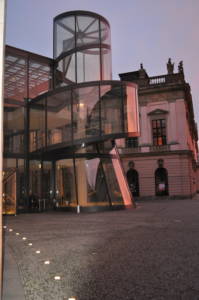By SEAN GILL

Berlin, Germany
Inside Berlin’s Deutsches Historisches Museum, there is a quiet passageway which serves as a spatial juncture between the Nazi era and the Soviet one. There is only one exhibit in this place: an enormous metal globe, encircled by wooden framing and encased in glass. Its lands are tinted municipal yellow-brown, its seas faded cyan. This particular globe may once have belonged to Ribbentrop, Goebbels, or perhaps Hitler himself. This is not a shock; Hitler’s actual desk rests in the preceding room, about forty meters behind you. You have therefore already experienced such a flood of icy association; an anxious dread similar to when you behold a steep precipice, or pass by a policeman toting an automatic weapon.

